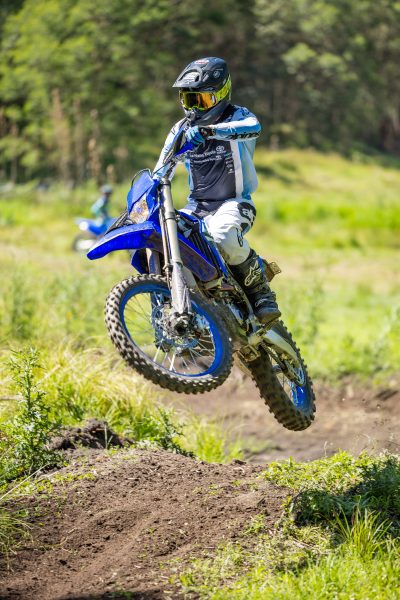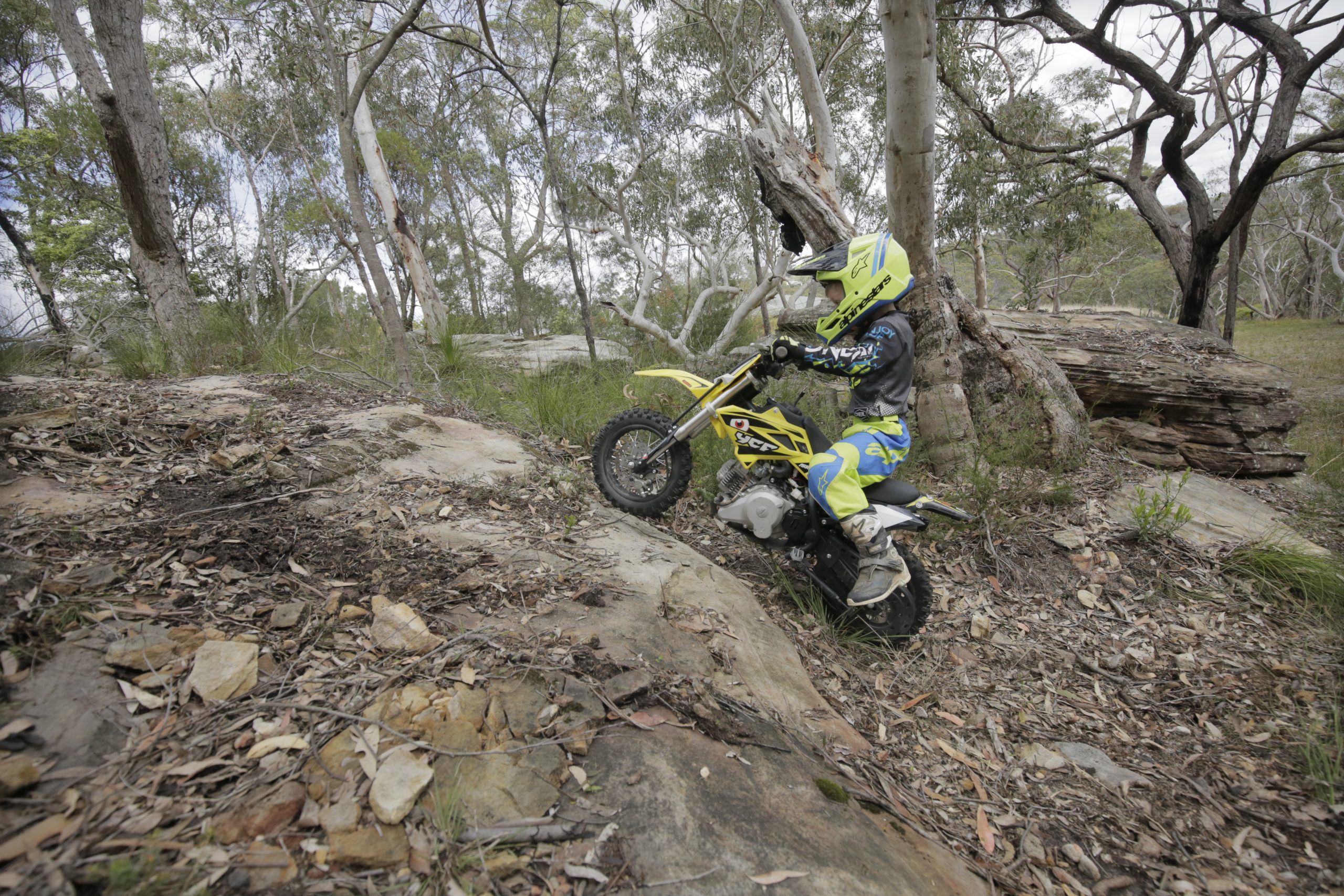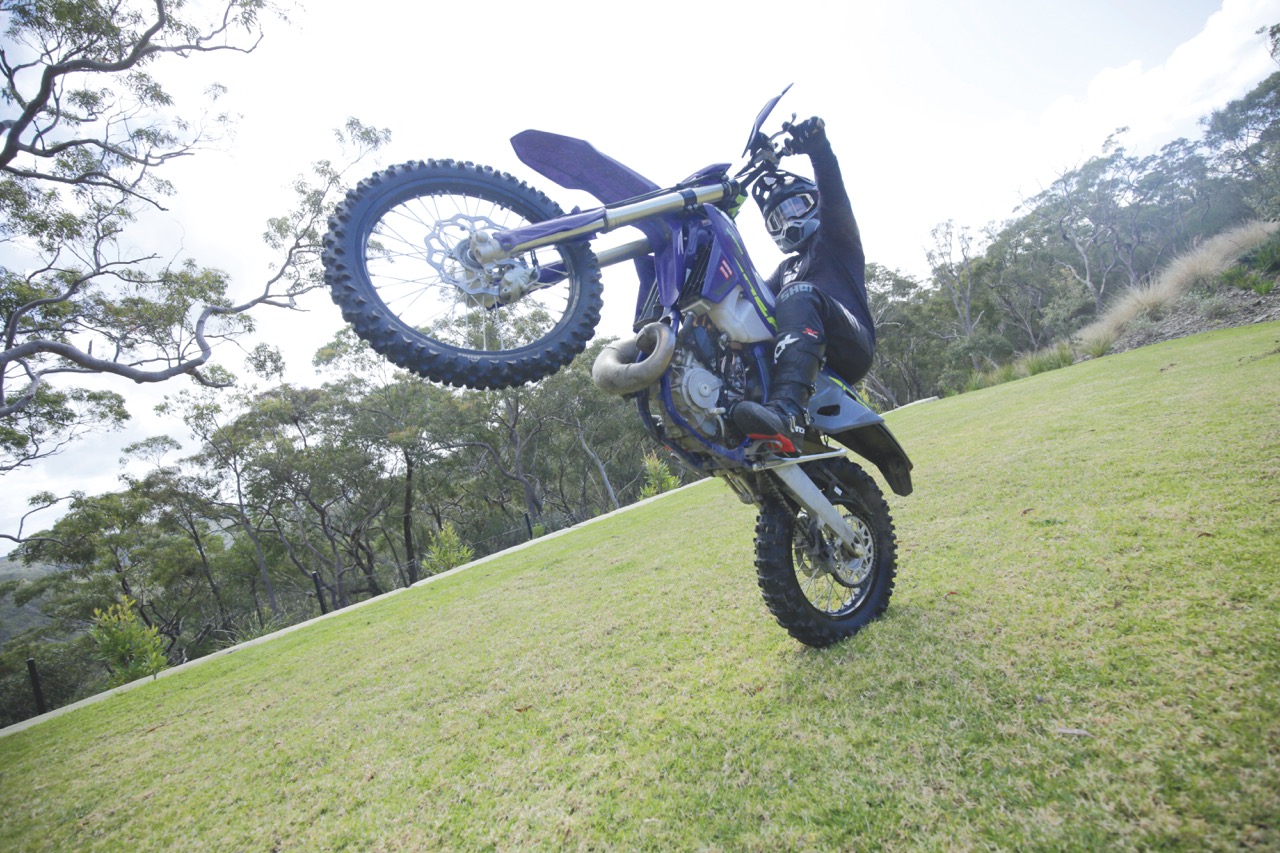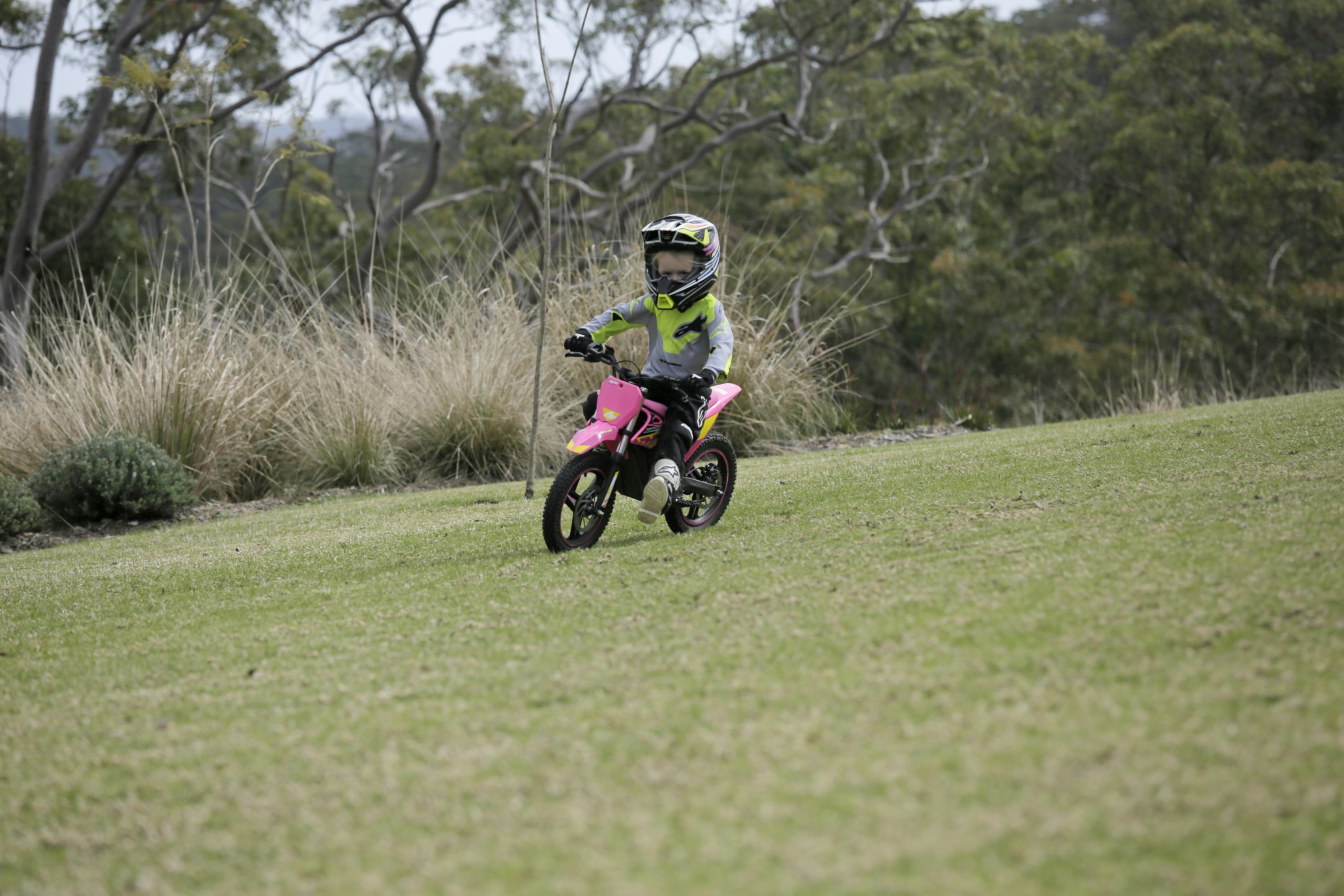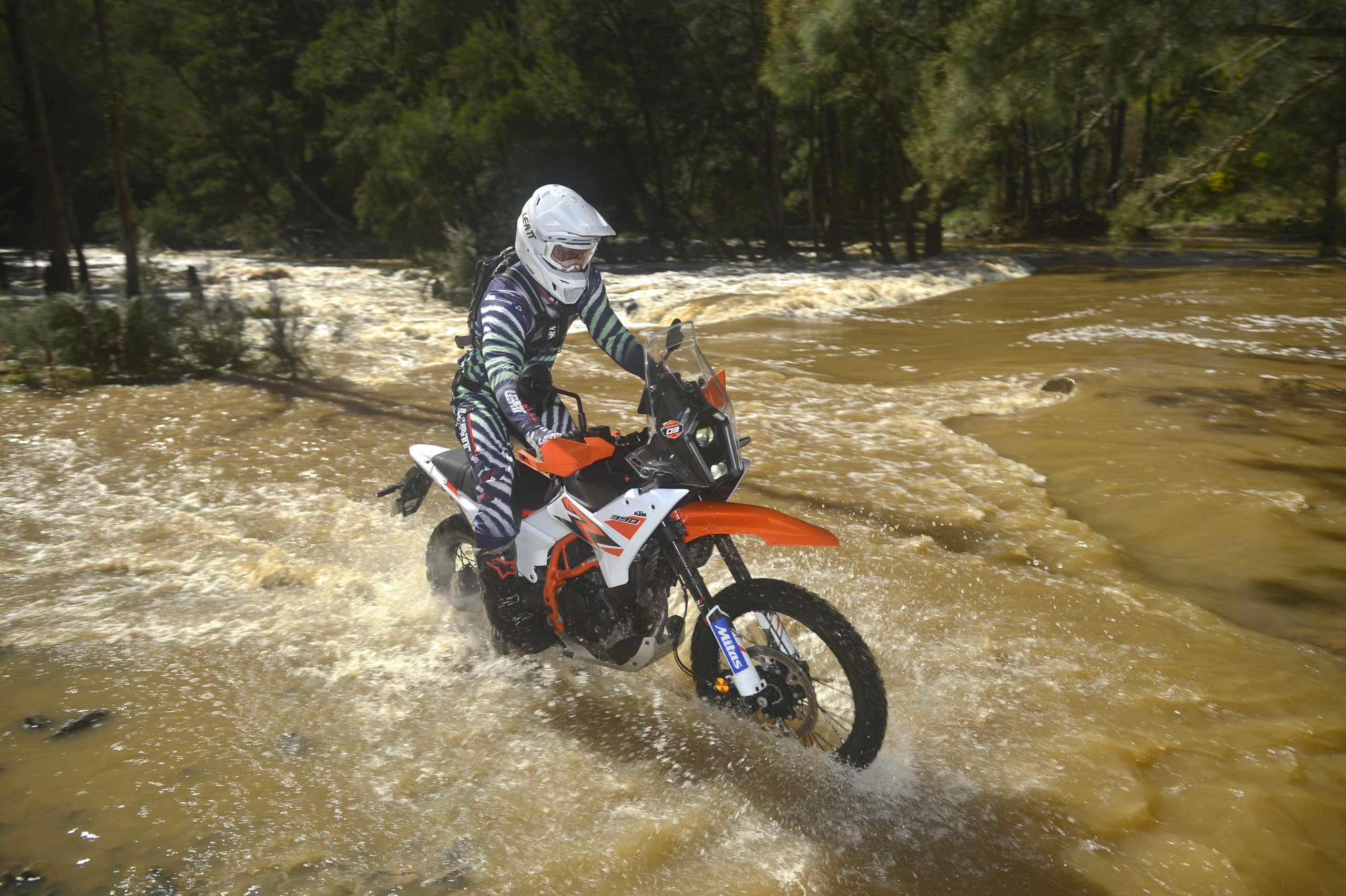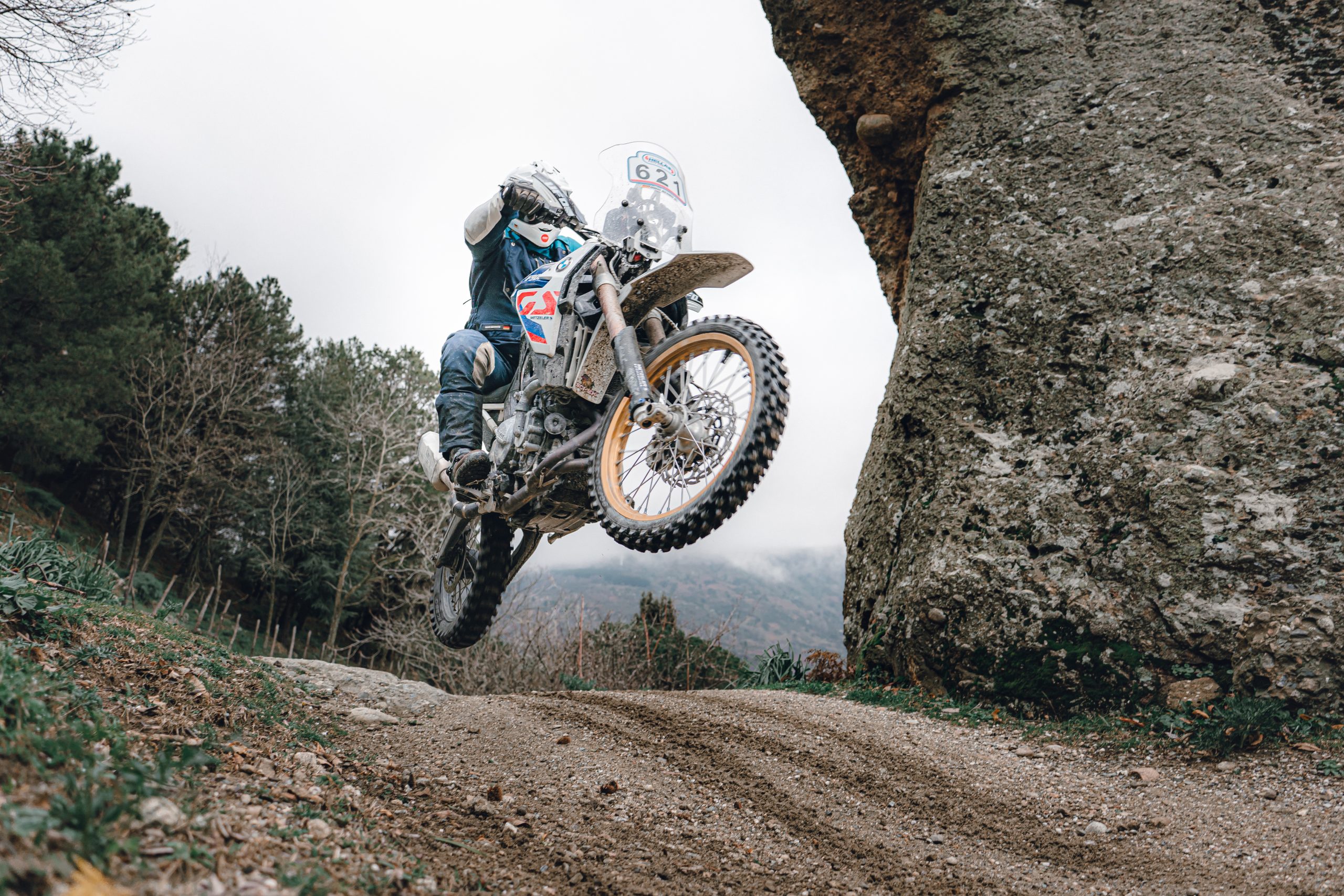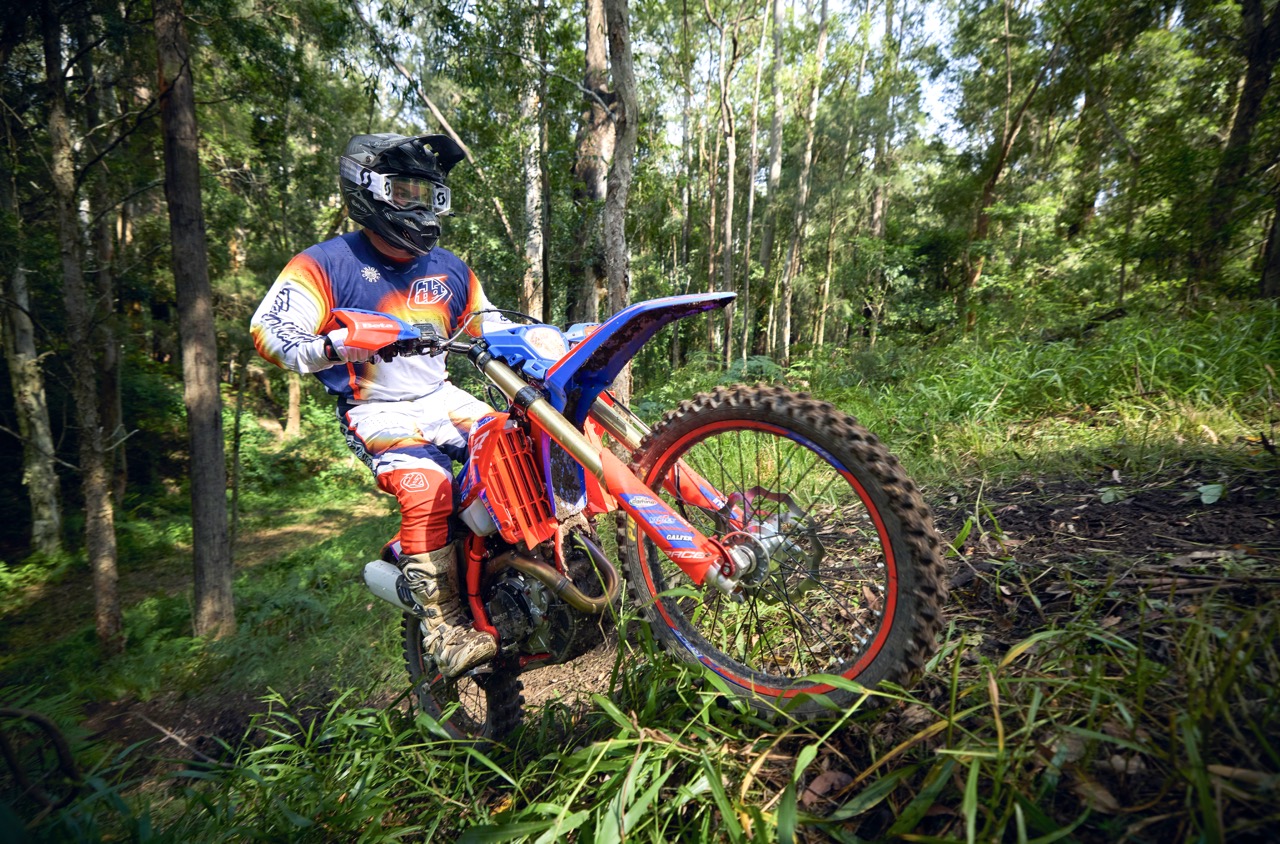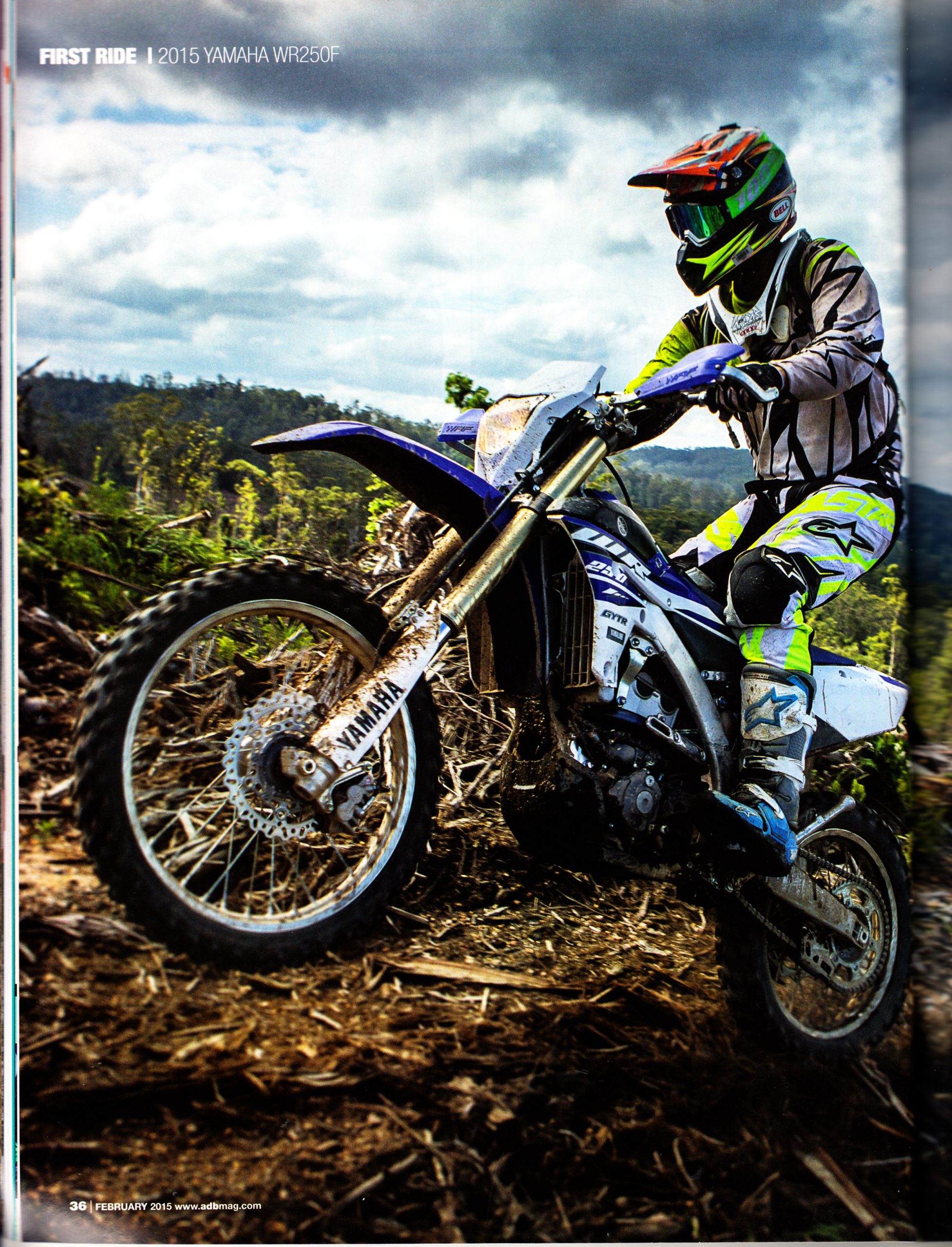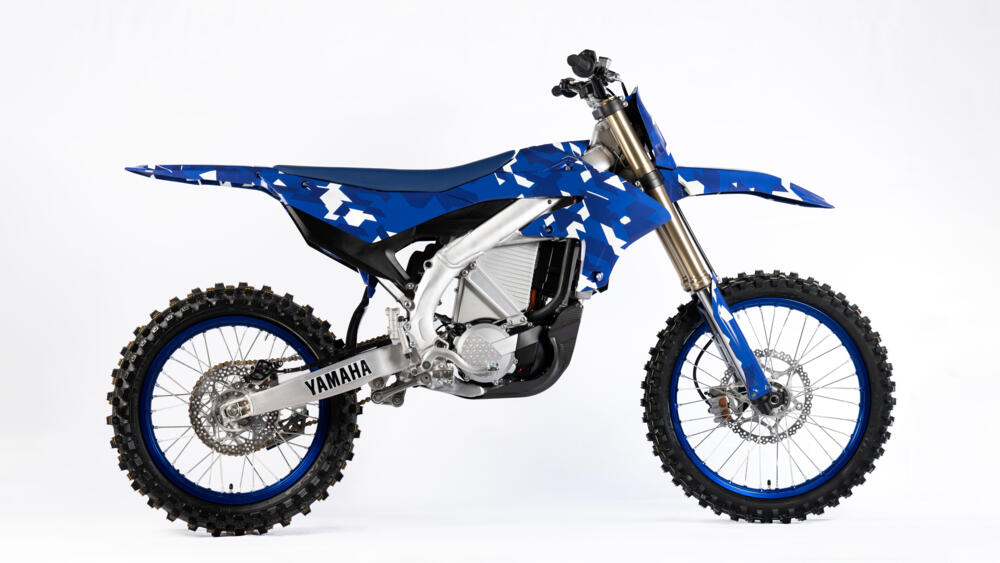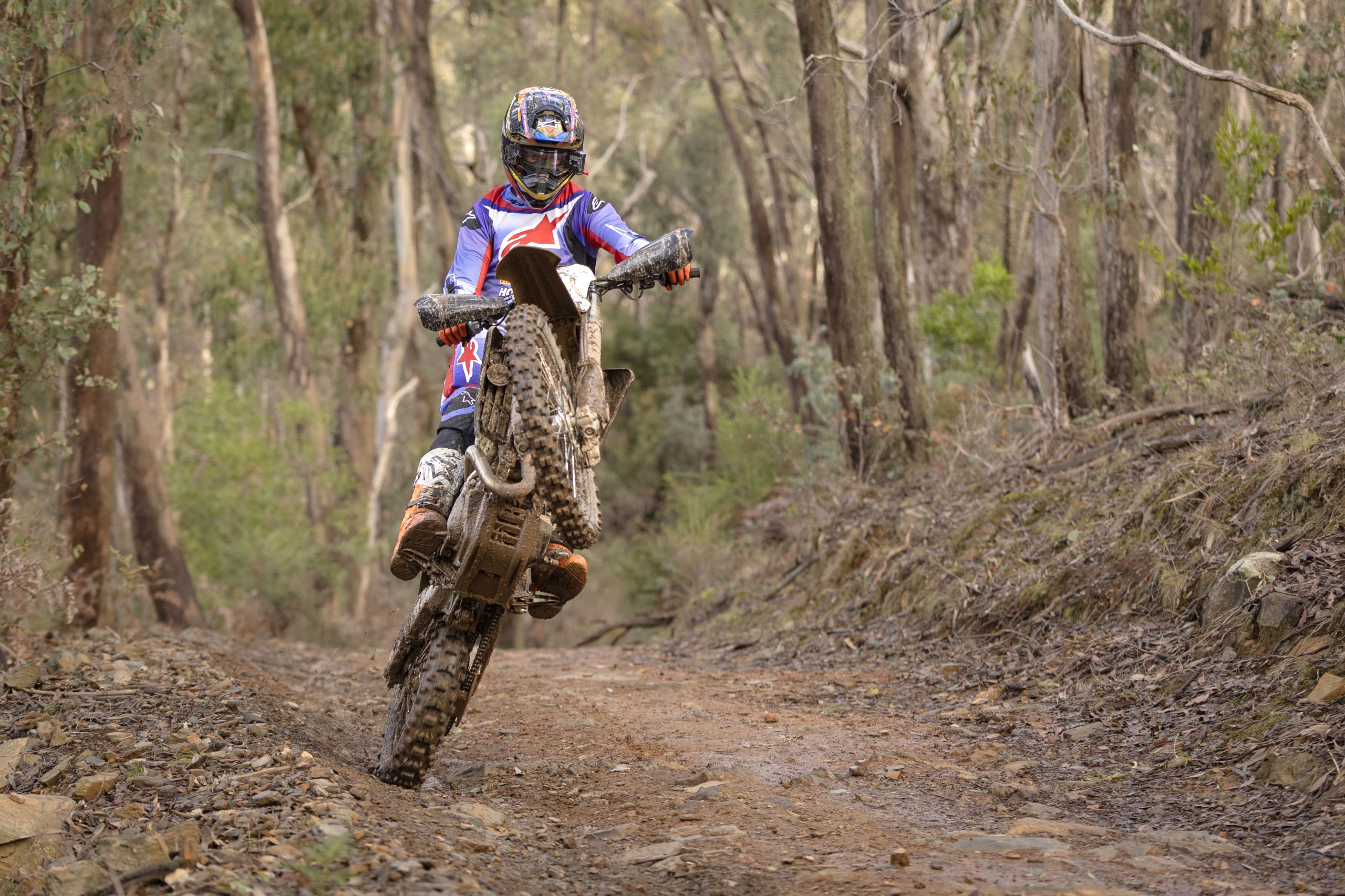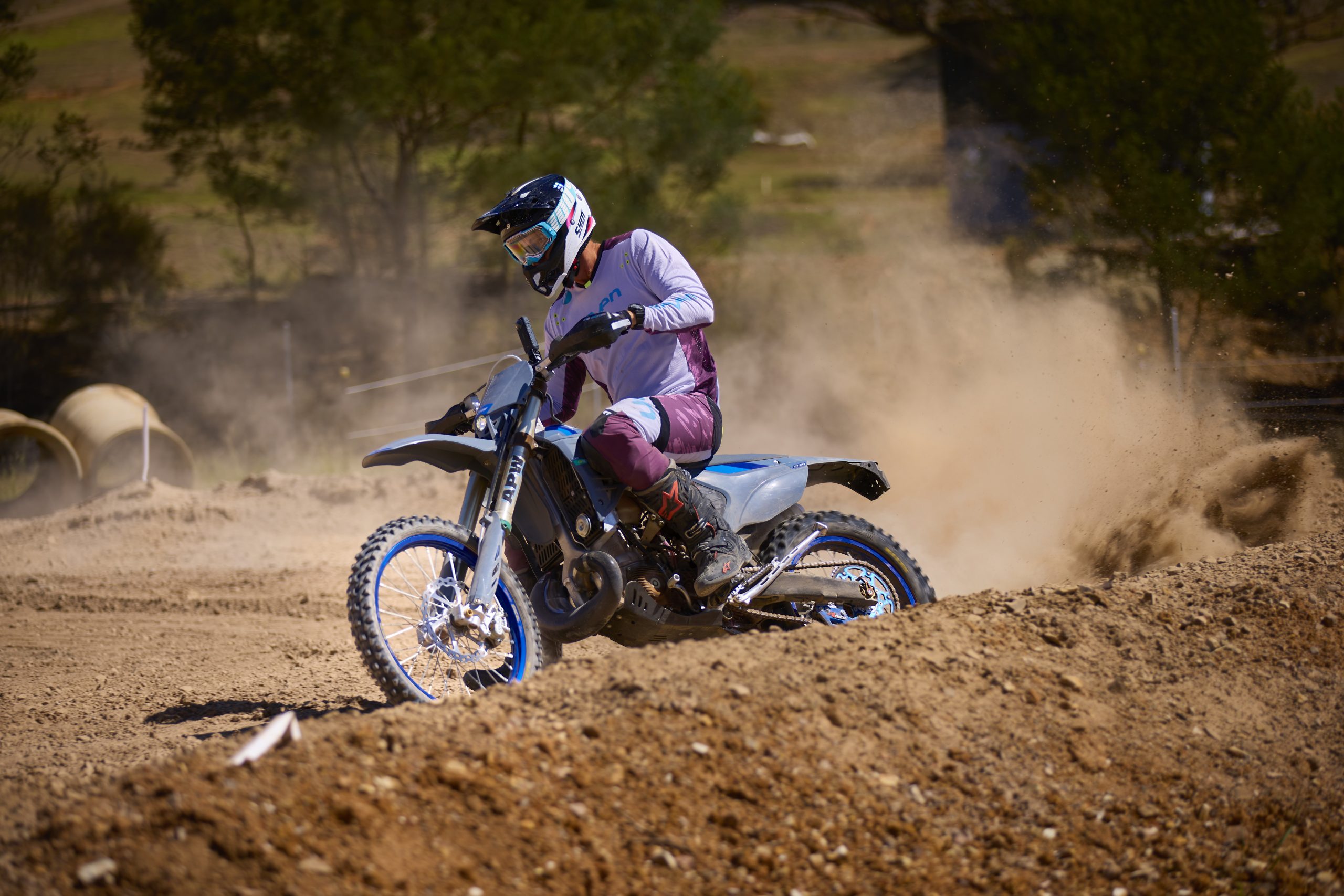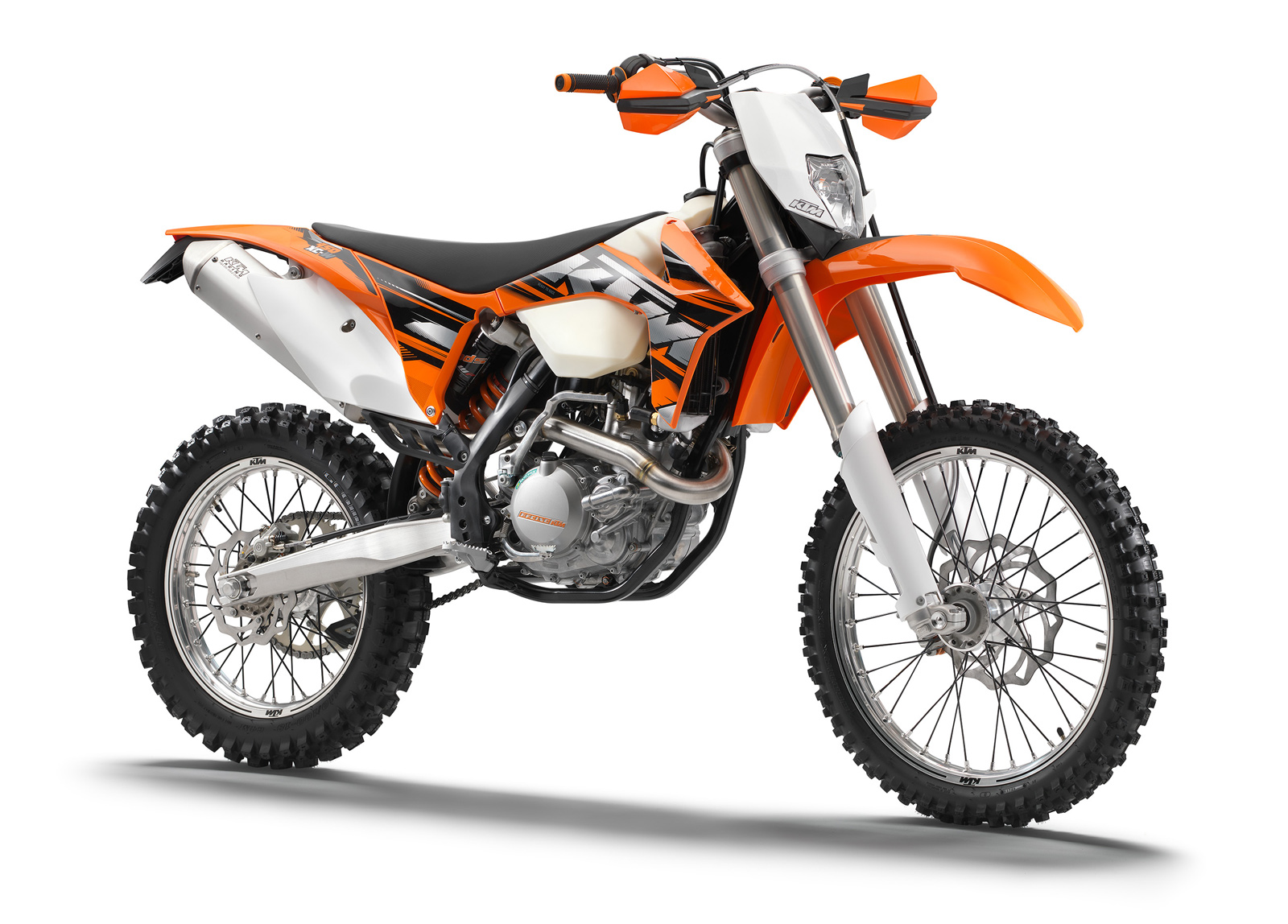The WR250F is the only motorcycle that I have pretty much been a part of since it was introduced in 2001 when I was racing for Yamaha Australia so I was excited to test the 2025 Yamaha WR250F. It was on this bike that I took the win the E1 Class at the Australian 4-Day Enduro which, even though an Australian national title, was held in New Zealand in 2001.
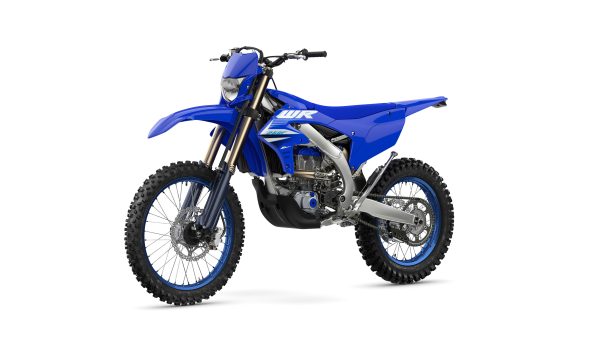
Back then, there was no Australian off-road championship series like there is today, and the next best thing was the NSW Off Road Championship, which I also won on the WR250F.
When Yamaha Japan was finalising the specifications for the 2002 WR250F, it enlisted me and enduro legend Geoff Ballard for the final test session of the bike in Australia. Testing with the Yamaha Japan technicians was a great learning experience and it was even more rewarding when the WR250F started selling like hotcakes and winning races in Australia.
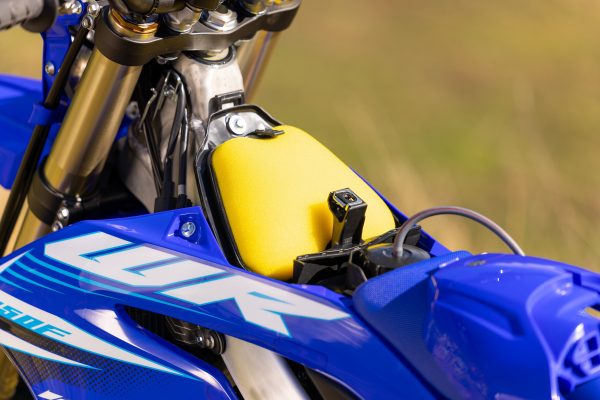
Geoff and I must have made a good impression, because in 2002 we were both invited to Japan to partake in the testing of the 2003 model, and we had lot more involvement in the development of the bike.
The following year I switched brands, so that was – at this stage – the end of my journey with the WR. However, Yamaha Japan stuck with the program of using high-level Australian winning riders to continue with the set up and development of the WR. These riders included Glen Kearney, Stefan Merriman, Josh Coppins, and AJ Roberts.
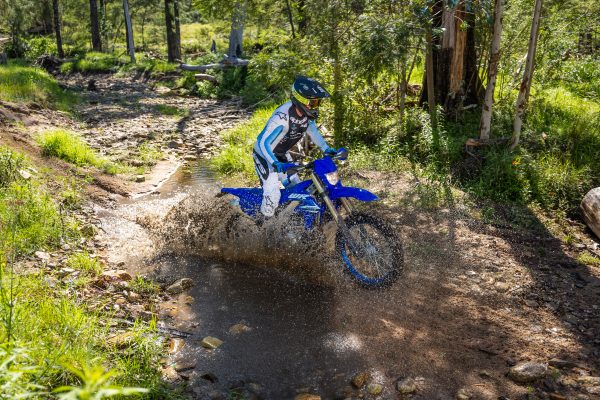
As far as I know there is no other motorcycle manufacturer that utilises the knowledge of Aussie riders in the development of its bikes.
Since being a part of the development of the first three generations of this bike, I have had minimal interactions with it, so I was excited to receive the call from ADB to attend the 2025 Yamaha WR250F launch, the seventh generation of this model.
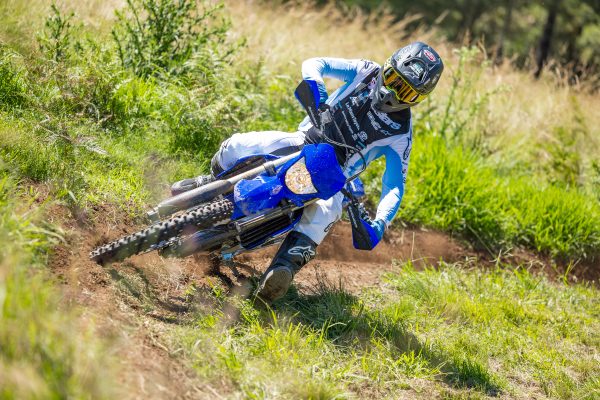
In the current economic times, you could understand it if Yamaha sat on its hands and made minimal changes to the WR250F for the 2025 model year as other brands have done, but instead Yamaha has gone full steam ahead and has essentially produced a totally new WR250F. As you’d expect, Yamaha says this is the best WR250F it has ever produced, and it claims it is more rider friendly, lighter, slimmer and with a lower centre of gravity than any previous models, making it quicker to ride through tight turns.
Yamaha believes it is both the fastest and most fun WR250F yet.
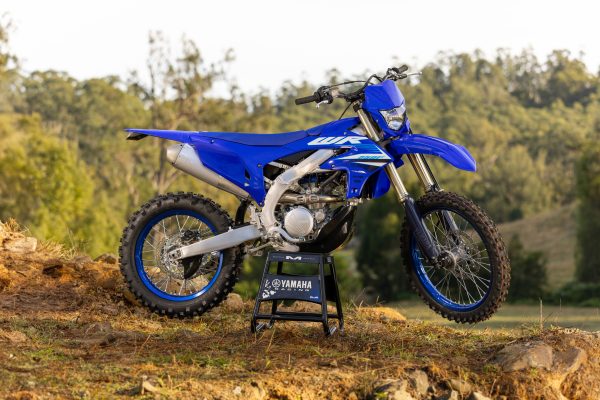
WHAT MAKES IT BETTER?
A new bilateral beam frame has been developed with rider feedback to ensure a more rigid balance for excellent handling, turning and impact absorption. There are new cylinder-head mounts along with new front engine mounts that are formed with two metal plates of different thicknesses, and these parts are said to achieve the right chassis balance for confidence and stability on gnarly tracks.
Improved ergonomics come thanks to a flatter and slimmer seat with a more rounded profile. The new seat’s height difference front to rear is reduced by 15mm, and its edges are rounded to increase riding position freedom, allowing better movement front to rear, easier leg extension and improved seating-to-standing position. The new riding position provides 10mm more leg room, while the handlebar is moved forward one pipe width. The shrouds are 50mm narrower to further aid rider movement on the bike to improve handling.
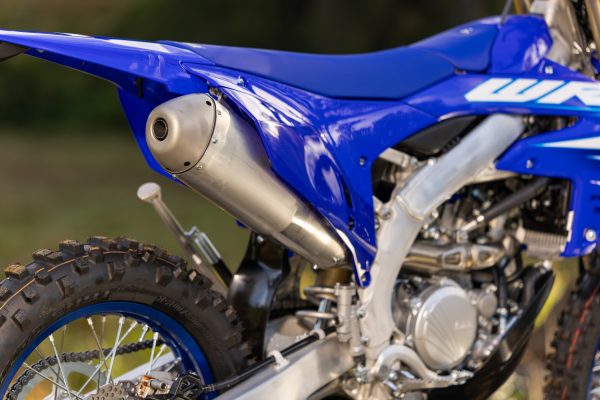
There are a raft of engine updates including a new starter motor and ignition coil; reduced friction cam chain, new cam shaft sprocket, cam chain guide and cam chain stopper; new throttle body; new neutral switch; new air filter system with a curved filter element and optimised case for 30% more volume; and a revised ECU with optimised fuel and ignition settings.
There is a new multi-function mode switch with integrated engine stop and mode selection. There are two customisable power modes; the blue light has the same map as no light, but has traction control. The Yamaha power tune app has also been updated and features simpler, intuitive tuning thanks to an aggressive to smooth scroll bar adjustment; three levels of traction control adjustment; a lap timer function – use the multi-function button; and suspension and power tuning set-up advice.
The 2025 model has lost 2kg overall and it has a lighter rear wheel with a three-spoke lacing pattern and longer spokes for more flex.
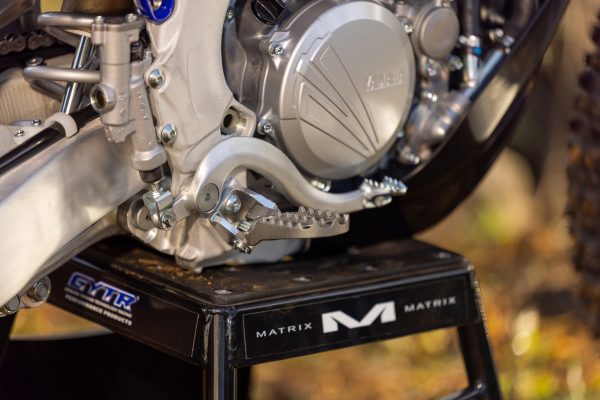
HOW DOES IT GO?
All of the updates look exciting on the spec sheet but I usually don’t buy into any of it too much until I get to the fun part: going for a ride!
The venue for the launch is owned and set up by ex-motorcycle speed demon Lyndon Heffernan and is located on the beautiful south coast of NSW. It is perfect for testing with access to a natural terrain grass track, enduro special test loop, motocross track and surrounding forestry for trail riding. I clocked up a total of six hours riding on the wide array of tracks at the launch.
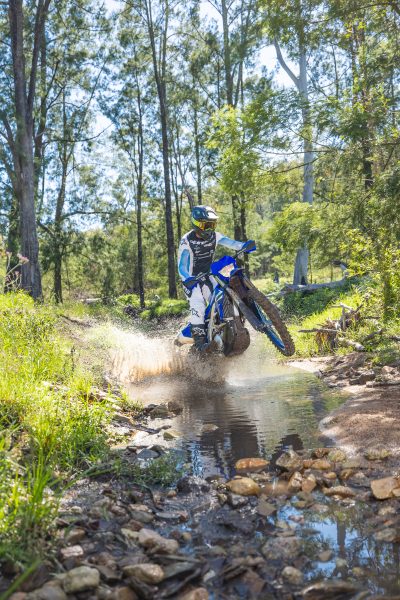
As with any 250cc four-stroke enduro bike, the most important aspect of the new WR250F is engine performance. In the past, Yamaha has always been known to produce a very powerful WR250F, but sometimes one that is too hard edged/MX orientated for the average trail rider. It didn’t take me long to realise that this new WR-F has retained its high power output and in fact the overall peak performance and top-end power makes it arguably the most powerful standard 250F enduro engine I have sampled. Even in the midrange it produces the kind of power you would expect from a much larger capacity engine. The only area I would like a little bit more from is right down low in the rev range when trying to exit a corner in a tall gear.
The new six-speed gearbox has a wide spread of ratios making is very versatile; I could poke around in first gear at 11km/h and then when I got out onto open fire trails in sixth gear it was capable of 151km/h before I had to back off for an upcoming corner.
The throttle delivery on this new engine is the smoothest I have ever felt on a WR250F which made the twisty, tight, bush sections a lot easier to ride when on and off the throttle. The new multifunction mode switch is easy to use and access on the fly, and the traction control works really well in pretty much every situation. The new air filter set up has reduced induction noise significantly throughout the rev range, and even with this engine pumping out a lot of horsepower up top the overall fuel economy was impressive; I only used two litres for the 40km trail ride loop. With a 7.4L fuel tank you would be pretty safe heading out on a 140km trail ride before needing to fuel up. The low-fuel indicator light comes on when you have 2.1L remaining.
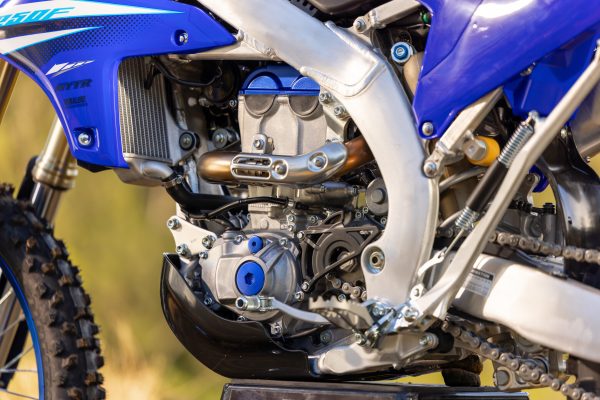
COMPLIANT RIDE
It is hard to find anyone in the dirtbike community that does not agree that a Yamaha with KYB suspension can easily hold its own on a racetrack, but I have heard people comment that the WR250F is too ‘racey’ (firm) for the average trail rider.
When I first jumped onto this WR-F I headed straight out onto the MX track and for the first 20 minutes it felt like Yamaha may have stuck with a more MX-orientated suspension. Both ends felt amazing when hitting bigger jumps and charging hard but on smaller bumps and a few stoney sections the suspension felt quite stiff.
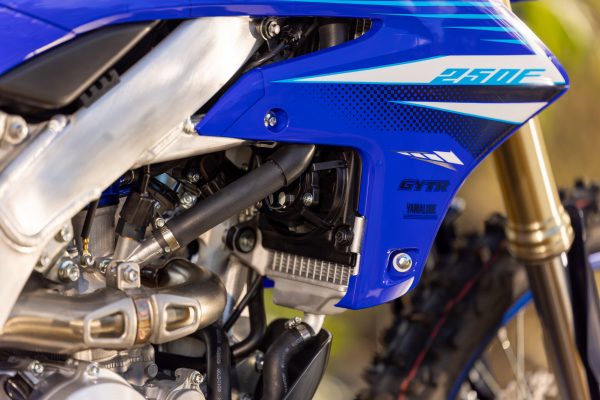
By the time the testbike had clocked up roughly an hour of riding time, both the fork and shock had started to move a lot more freely and the bike felt more supple overall. The KYB rear shock was the standout as I never felt like I needed to play around with the settings, and even though it was more than capable at every obstacle on the MX track, it was still compliant enough to absorb any of the small nasties that you would typically find in the bush.
Even after the KYB fork was run in, it felt a tad on the firm side for me, but luckily the compression adjustor on the fork is now tool free. This meant I could soften each fork a few clicks as I rode and I eventually got it to the point that I was happy with it in all terrain.
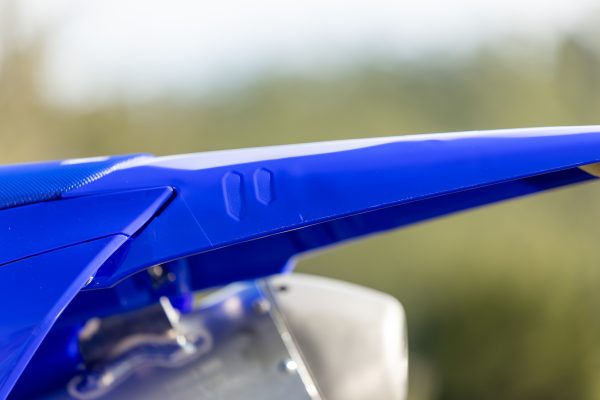
ERGOS AND BRAKING
In terms of the ergonomics, Yamaha has done a great job at creating more room and giving this bike a much smoother feeling overall. Potentially my favourite update to the bike is the new flatter seat and its more rounded edges, as it gives the WR250F a much smaller and friendly feel. Considering the handlebar has four optional mount positions, I can see the majority of various-size riders being able to find their optimal position and feel.
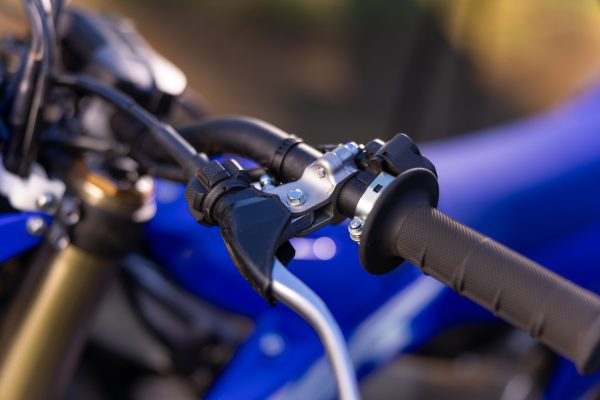
In the chassis and braking department, Yamaha has really nailed it. Both brakes have exceptional feel and braking power, while both the front brake lever and rear brake pedal have good adjustability.
In terms of the chassis, the WR250F gives a very calm and predictable feel in all riding situations, and the few times I did open it up on high-speed sections, the front end felt predictable and stable.
Overall, Yamaha has done a fantastic job ensuring the WR250F remains more than capable in any off-road racing situation, while also smoothing over a lot of the hard edges so that it’s a lot easier to ride and use for any level of rider.
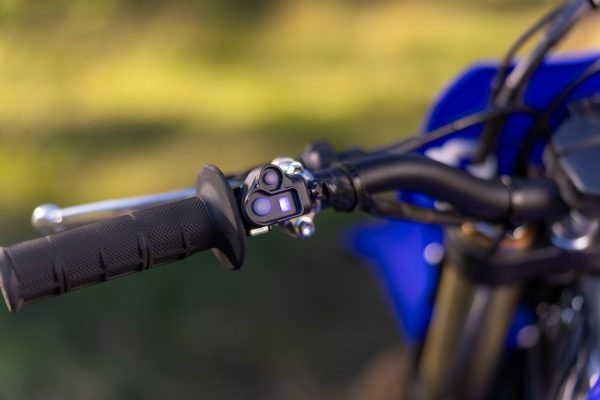
2025 YAMAHA WR250F
ENGINE
Type: Single cylinder four-stroke, DOHC, four valves
Displacement: 250cc
Bore and stroke: 77.1mm x 53.6mm
Cooling: Liquid cooled
Compression ratio: 13.8:1
Fuel metering: Mikuni fuel injection, 44mm throttle body
Tank capacity: 7.4L
Transmission: Six-speed
Clutch: Wet, multi plate
DIMENSIONS
Wheelbase: 1470mm
Seat height: 955mm
Ground clearance: 330mm
Wet weight: 113kg (claimed)
SUSPENSION
Front: KYB 48mm USD fork, speed sensitive, twin chamber, fully adjustable
Rear: KYB shock, fully adjustable
BRAKES
Front: Hydraulic, 270mm disc
Rear: Hydraulic, 240mm disc
RUNNING GEAR
Handlebar: N/A
Front tyre: 90/90-21 Dunlop Geomax EN91
Rear tyre: 140/80-18 Dunlop Geomax EN91
PRICE & CONTACTS
RRP: $16,799 ride away
Browser: Yamaha-motor.com.au
Blower: N/A
Warranty: Three months, parts only
